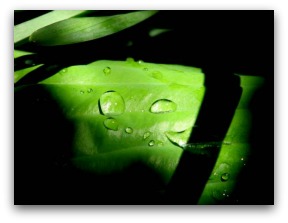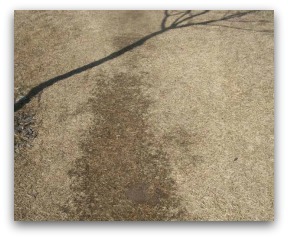G. How to Seed Lawn
How to seed lawn is full of tips on growing grass. Seeding your
lawn is the easiest, cheapest, and quickest way to deal with most lawn
problems.
Thin areas, and bare patches of grass can be dealt with quickly and effectively, but there are some things to know about prep work before you start.
We recommend a visit to our full module on Seeding a Lawn, but here we provide a shorter breakdown for you with some helpful tips.
For those of you that have just joined us, there are links to other lawn repair methods at the bottom of this page.
Timing is everything when it comes to seeding your lawn.
Timing is important with seeding. It may be possible to seed almost anytime, but your success rate increases when you follow a few simple rules.

The number one rule is “Be there!” Grass seed germination requires special attention until it has started, so don't seed if you plan on taking a vacation.
Germination requires water, oxygen, the right air, and soil temperature to create ideal conditions. When these are all met in the right combination, you will have your most success seeding.
There are different times of the year when these conditions exist, but mother nature can also change these at any time without warning.
Cool season grasses should be seeded in the spring, late summer or early fall. Many people have great success after the summer heat has given way to more favorable growing conditions. September is the optimum time to seed for most areas. Spring is also acceptable as there is time for the grass to become established well before the hot summer months hit.
Warm season grasses should be seeded in the late spring or early summer. Soil temperatures between 70 and 90 degrees are the most favorable for germination.
You will usually seed with the same variety that you are currently growing in your yard. Not all varieties of grass look well blended together, and some varieties should not be mixed at all.
Seeding and dogs don't get along very well. If you have a dog you can't keep off the area, you should consider sodding. Dog's agile movements will tear the tender young roots before they get a strong foothold in the soil. The dog's urine will also kill the grass with its high concentration of nitrogen.
When seeding lawns and bare patches, make sure that you roughen up the existing soil surface to a depth of ½ inch or more. You can do this by using a steel tine rake (bow rake), for small areas. Here are a few benefits:
- Helps prevent water runoff and pooling of seeds when you are lightly watering your seeds;
- Helps the roots penetrate easier into the soil;
- Ensures better contact of the seed to the soil; and
- Allows oxygen, water and other nutrients to penetrate into the soil easier.

When watering, only mist your seeds.
Lightly water or mist your new seeds frequently. A few times (3 or 4) a day if you can. Keep the seeds moist until they have germinated. Never let them dry out once you have started this process.
Never leave a hose or irrigation system on newly seeded lawns. There is no benefit to having this much water. The seeds only need to be moist. You will risk washing the seed into streams and puddles that will leave you with poor coverage after germination has happened.
Soil erosion is common before the new lawn is established. Always have control measure in place for down spouts, and other areas to prevent this. This is one more way to prevent your seeds from being washed away in rivers.
Keep the seeds covered when possible to help retain the moisture. Mulch is ideal, straw is also acceptable. This can also help prevent hungry birds from feasting on you seeds.
Coverage should be about 15 to 20 seeds per square inch. This may sound like a lot, but think about the average human head having between 1000 and 2000 hairs per square inch.
You can also seed bare patches with special patch repair (I wish I could do that with my bald head). Patch repairs are seed mixed with starter fertilizer and mulch. These are very handy for small patches, and can be purchased just about anywhere grass seed is sold.
With some varieties of grass you may actually see germination give way to a green haze in the first week after seeding.
Most grasses will take 8 to 14 days on average to germinate, but it can take a little longer than this so be patient.
If the conditions are ideal, most of the seed should have germinated in about 20 days.
Using starter fertilizers. These are high in phosphorous to encourage root growth. Stay away from pre-emergents as they prevent germination of weed seeds as well as your germination of your grass seeds.
If you have used any pre-emergent on your lawn, you may have to have to wait to seed. The wait period will vary depending on how much water you have had, the soil type, and how well it drains. It could be 2 to 3 months.
If you can't wait, you can detox your soil with an activated charcoal. This will neutralize the soil so you can seed it.
Here is a website link on activated charcoal.
Seeding with Core Aeration or Dethatching

Compacted path through lawn.
If you are repairing a lawn with thatch build up, weeds or compacted soil, this is a one way to improve an existing lawn without having to start over again. After core aeration, dethatching or power raking is an ideal time to seed.
If you have poor soil, you can also change the soil composition over time with a good topdressing program. Cores that have been pulled from heavy clay soil can actually be raked and removed from the lawn. (They have little or no value anyway). The topdressing that you have applied, will take the place of the poor soil cores that were removed.
Core aeration allows you to rebuild a healthy soil for your lawn. This may take a few seasons, so don't expect to see dramatic changes right away.
So, was there a little more to seeding than you thought? Not like Jack and the Beanstock with his magical seeds. Some people might have some pretty good luck hoping for the best. We just wanted you to be a little more informed so your chance of success will improve. Relying on luck is not something we recommend unless you are using our definition.
To us, luck means: Laboring Under Correct Knowledge.
Lets move on to How to Sod.
______________________________________
Table of Contents: Lawn Problems
C. Lawn Repair
E. Replace Lawn
H. How to Sod
______________________________________
Return to the Lawn Problems Introduction
Go to Dream Yard Home Page from How to Seed Lawn
Check out our time and money saving e-book
How to avoid the biggest mistakes made by DIYers, designers, and landscaping companies.
Visitor
Favorites
Giggles 'n' Thoughts





